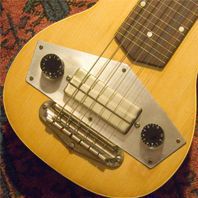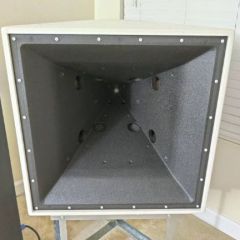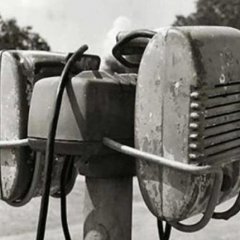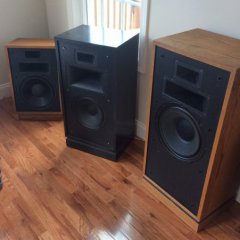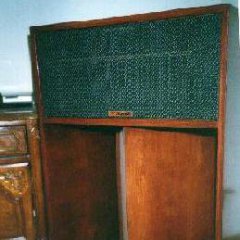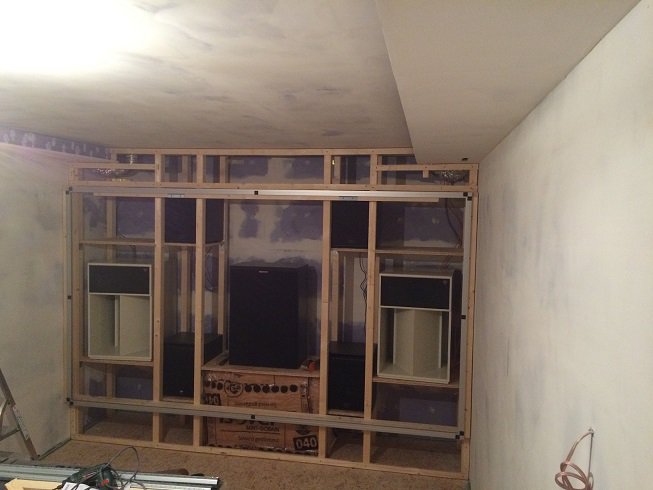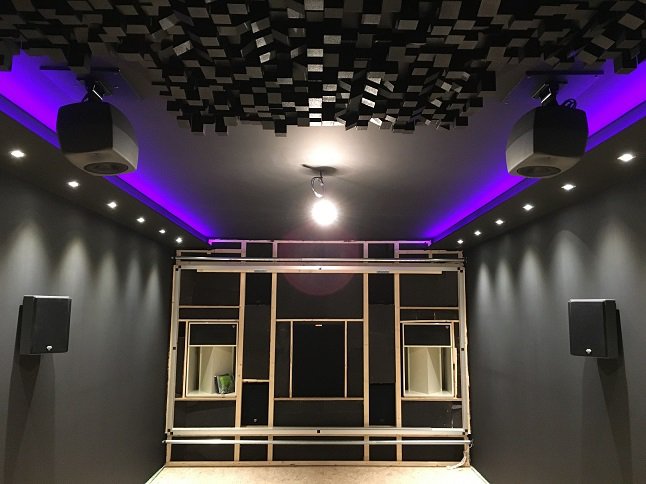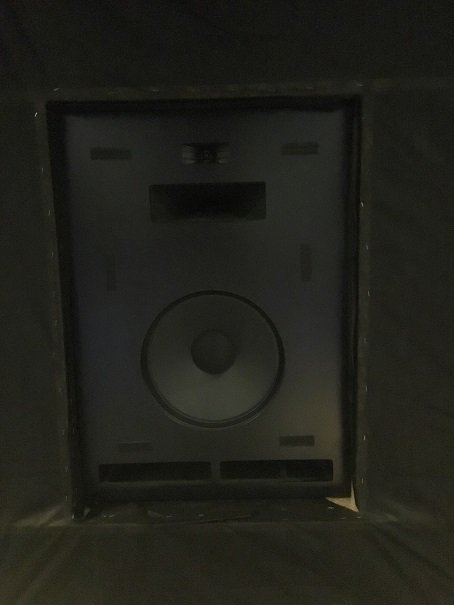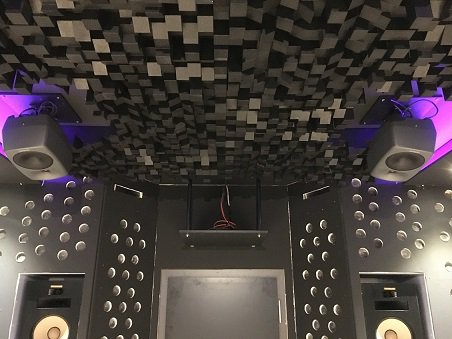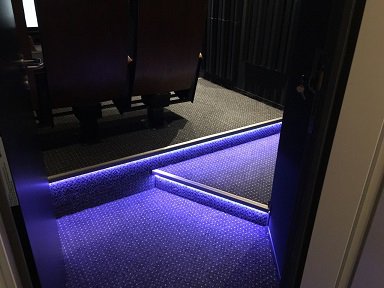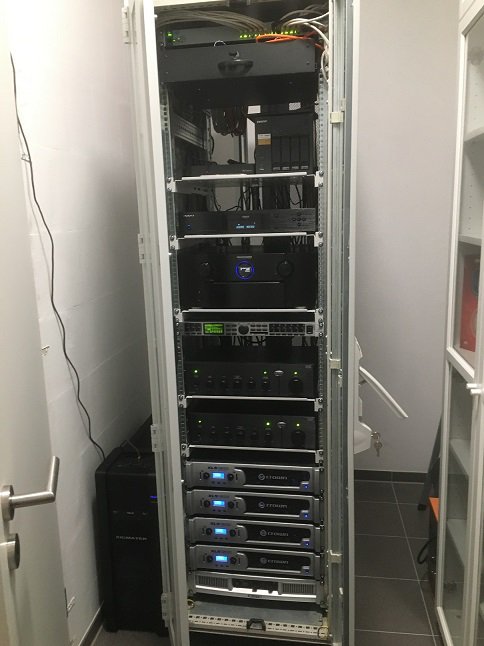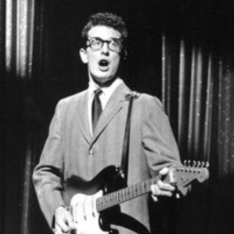Leaderboard
Popular Content
Showing content with the highest reputation on 02/01/19 in all areas
-
One of my friends has 2 tickets for the 2019 Super Bowl, both box seats. He paid $2,000 for both tickets, but he didn't realize last year when he bought them it was going to be the same weekend as his wedding. If you are interested, he is looking for someone to take his place. It's at St John's Episcopal Church in Martinsburg WV at 2:00 PM. Her name is Connie, she'll be the one in the white dress.9 points
-
Made a new sign to hang at the old Steam generating building by the airport. We're going there to clean up but mostly move things around so it can be a new stop when people go to the Pilgrimage, a new part of the Museum. We asked if we donated a sign if it could hang until something else comes along, the building was not yet marked as part of the museum. The sign is 2' x 4' Red Cedar9 points
-
6 points
-
5 points
-
Dry January is officially in the books. The fast was broken with Jeffersons Ocean. Damn fine stuff.4 points
-
Leaving for Hope in the AM, going to work on the Museum for a few days and harass Chief bonehead. Just hate to think about being in the car for 7 hours to get there.4 points
-
You have a better chance of hurting your speakers with a low power amp trying to do too much, than a high power amp having to do too little. I have clipped and fried two pair of 200 watt speakers with a 35 watt receiver. I have never damaged any speakers using 200-600 wpc amps4 points
-
4 points
-
4 points
-
My wife has considered moving to make me get rid of my stuff. Actually, maybe she just wanted to move, I'm not sure I'm invited...3 points
-
3 points
-
Here is some info from two folks on the forum I respect.Unfortunately, Dennis has passed away. From DJK: It's not the clipping per se that damages the speaker, but the clipping frequently causes amplifier stability issues in the feedback loop that can cause damage (excessive cone motion from infrasonics). Tweeters burn up from excessive long term average power, not clipping. ************************************************************************************************************************************************* "If your getting distortion or clipping, yes that is very bad for your speakers." An urban myth. Two things ruin speakers, too much long-term average power, and mechanical damage from over-excursion. Unless the distortion or clipping cause either of the above two, your speakers will not be harmed. Anyone that wants to argue will have their head handed to them when I am done with them, search for my previous explanations as to why this is a myth. ************************************************************************************************************************** Amplifier clipping causes no damage what so ever, unless you exceed the long term average power limit of the driver, or it causes mechanical damage. Clipping below 40mS in duration is generally inaudible to the average person. The APT Model 1 had an indicator labled 'distortion alert', it would flash if the duration of the clipping was in excess of 40mS. A Peavey with DDT (distortion detecting) will go into limiting when the duration of the clipping exceeds 100mS. The Dynaco Dynaguard had a delay that was dependent on the overdrive applied, but would allow clipping for tens of mS before pulling back the average power leve (user programable). From JohnA: I believe clipping gets blamed because clipping is so often involved, but the real problem is the average power levels are too high. A clipped amp will be putting out a lot of average power, something like a compressed track. Add the HF required to create (created by) that square topped clipped off wave and the tweeter gets a double shot of energy. Van Halen's "Runnin' With The Devil" has a square wave generator applied to the guitar. This was my first clue that a clipped amp sounded worse than it was damaging. Square waves are found often enough in music that a speaker should be able to tolerate them. And a very long piece from 2014 by DJK... (I really miss this guy): "I am interested from the academic point of view. Also i might require to make for 2" compression driver. This will also increase my knowledge about the subject. " "I am also waiting 4 ur details/new thread about the klipsch protection circuit" OK, let's keep on with it here for a while. Drivers fail for two reasons: Excess average power Mechanical damage Clipping will not hurt anything if it does not cause the above problems. After larger amplifiers (above 50W) became common, problems with high frequency units self-destructing became a problem. A tweeter like the EV T35/Klipsch K77 could handle 5W continuous, 50W for 10mS peaks, so normal program material wasn't the problem. The tweeters were dieing from mechanical failure. The voice-coil was wound with aluminum wire that ran out to the terminals on the frame (self-termination). Shallow slopes in typical crossovers (6dB) combined with higher drive levels produced failures. Copper wire was tried instad of aluminum (aluminum work-hardens in a very short time). Still, the failures continued. Klipsch switched to the 18dB crossovers in the very early 70s. This helped with the excursion failures. Now, 100W+ amplifiers became common. Klipsch went to cathode-to-cathode connected zener diodes. These clipped off the peaks that were mechanically destroying the tweeters. Things went well for about ten years. In the early 80s it was time to try and get rid of the expensive band-aid (the zener diodes). EV changed the lead-out wire from the self-terminated copper voice-coil wire to a flat BeCu wire like used on expensive JBL and Altec type compression drivers. A new network was designed with an elliptical filter with 50dB of attenuation only a half-octave away from the crossover point. A fast- acting instrumentation fuse was added. Problem solved? The new version of the tweeter used a UV cure adhesive vs the old thermo-set adhesive. After the fuses blew from modern program material (about the same time as the introduction of the CD), they got replaced with fast-blow types (which offered reduced protection). The special instrumentation types were very expensive, and very hard to find. The new UV cure adhesive got soft, bubbled, and failed quite easily. A PolySwitch was tried. Too slow. The old thermo-set adhesive came back. The combination of the super-steep crossover, the flat BeCu lead-out wire, and the PolySwitch seemed to work (with the old adhesive). The zener diodes were retired for mainly two reasons: cost, and limited dynamic range. The AA networks used a pair of 5.1V 10W zeners. These only allowed about 2W RMS through before they started clipping off the peaks (a 4W peak square-wave) . With the advent of digital program material, 2W of undistorted program material no longer seemed adequate (about 97dB at 10 foot). The zeners limited the maximum distorted output to about 100dB at 10 foot. Removal of the zeners allowed exploitation of the 50W/10mS rating of the tweeter, about 14dB more output capability (referenced to the 2W RMS zener clamp). What did EV do for products sold under their brand? The STR tweeter protector was developed for this use. Later it was modified by adding a lightbulb in parallel with the relay contacts. I hope this give a little insight into what is needed for tweeter protection, and how we got to where we are. Vifa, Dynaudio, and others offer a choice between self-terminated tweeter lead-outs and a braided (or tinsel) type lead-out. The difference in cost for the braided type is worth it in my book. Most manufacturers of lower-priced product do not spend the money for this, or better crossovers either (although I am seeing lighbulbs and/or PolySwitches in some inexpensive product). Crossovers and tweeters must be designed to avoid mechanical damage in normal use (correct slope, frequency, and lead-out wire for the intended use). Long-term thermal protection is worthwhile. Some sort of switch device (relay, PolySwitch, fuse) in conjuction with a lightbulb seems to be the most cost-effective. Due to the long time constant of lightbulbs, most use does not seem to demand the switch (which shorts out the lightbulb in normal use). Suggested current levels: For 1" coils (tweeters), about 1A. The 561 or 211-2 automotive lamp has worked well in this application. For 1-3/4" coils (1" compression drivers), about 2A. The 1156 type automotive lamp has worked well in this application. For 3" (kapton) to 4" (nomex) coils (2" throat 16 ohm compression drivers), about 2A. I have found a 1.5A AGC (or 3AG) type fast-blow fuse will pass 400W of program material in normal use, and blow almost instantly if bad feedback is encountered. A pair of 1156 automotive lamps wired in series with each other, and then wired in parallel with the fuse will allow the show to go on when the fuse blows, and still offer some protection. If the fuse blows in the course of normal use, you need additional HF drivers, horns, and amplifiers. __________________ Candidates for the Darwin Award should not read this author. "As for using a L pad attenuator the idea of this is to maintain the same Resistance - Impedance as the Driver ie 8R0 to allow the crossover components to correctly filter the frequency. So how does this increase the loading? " Is this a trick question? It would seem obvious that the size of the lightbulb would need to be changed for every different attenuation value (if it's to be of any use). "So a 500W amplifier will deliver over 700W power to the driver if clipped hard enough." Really? Power goes with the square of the voltage, so it goes from 500W to 1KW, but that has little or nothing to do with why the drivers blow. Clipping can damage speakers, but not for the 'urban legend' reasons. "If you’re getting the idea I don’t believe in the clipping/ harmonic theory, you’re right. So let’s investigate the phenomena further. WHEN SINE WAVES CLIP When sine waves clip severely they resemble square waves in shape, introducing massive distortion. In the extreme case, a perfect square wave has the highest level of harmonic components (See Figure 1). A less clipped sine wave has components at the same frequencies but at lower levels. Let’s look at the square wave example shown in Table 1 (at left). Fourier analysis shows the harmonic structure. As you can see, the total amount of instananeous power left to make it through an ideal 1kHz crossover (and on to the tweeter) is less than two watts (0.83 + 0.589 = 1.419W). Hardly a problem. And remember, this simulates severe overdrive of a 100 watt amplifier with a sine wave to make an ideal square wave. Driving it harder will not increase the harmonics. This analysis shows if a small tweeter that only handles 5 or 10 watts is used in a 100 watt speaker system it would not blow out, even under square wave conditions. Yet it does. It takes a lot more than this to cause major failure. " Consider a worst case situation, an amplifier overdriven by 10dB or so. The bass content of the program material causes the amp to clip, the excess HF content from clipping harmonics fed to the tweeter is trivial. However, the average level fed to the speaker at mid and high frequencies is elevated as much as 10dB (due to the input overdrive) during non-clipped passages. WOOFER MECHANICAL DAMAGE (assume the design has sufficient x-max for in-band signals) It's not the clipping per se, but the poor design of the amplifier causing this. The pole in the feedback loop is generally poorly chosen and lower in frequency than the input pole, and above the power supply/load pole, so the poorly designed amplifier pumps out rail-to-rail signals at the feedback pole every power supply time constant. Good design reduces or eliminates this problem (although it seems like 99% of amplifiers have this problem). The easiest way to fix this is to change the poles so the feedback pole is at a higher frequency than the power supply pole, and the input pole is higher than the feedback pole. It also helps to put clamp diodes across the feedback cap. Another way to fix this is to put an input clipper on the amplifier. NAD amplifiers have this kind of a circuit (they call it 'soft clipping') and it tracks the supply voltages so you get the maximum power the amplifier is capable of. Since the input clips before the feedback loop clips, it's always stable. I used to put 50W NAD amplifiers in clubs with four Klipsch Heresy on them, you wouldn't believe how loud this combo will play driven a few dB into clipping. "2) Many crossovers barely handle the rated power of a speaker system, let alone the effect of a clipping amplifier. When inductors saturate, the tweeter gets not only the normal signal at high power, plus the distortion products from the clipping, but also back EMF from the saturating inductors and signals below the normal crossover frequency because the filter system in overload." Only the cheapest of speakers use low quality parts these days. Back-in-the-day a network needed the tweeter cap replaced (if it was an electrolytic) or the tweeter inductor (if the tweeter cap was a film type) after the tweeter burned out and the operator continued to play the system. In 30 years I can pretty much count on one hand the woofer inductors that failed in hi-fi use, these all developed shorted turns (causing damaging infrasonic woofer excursions). In pro sound I saw quite a few woofer inductors fail from too high of a DC resistance (causing the insulation to burn off the wire and the inductor to short out). The last KW is the most important, how it behaves at the limit. A well behaved amplifier with no dynamic off-set when driven 6dB into clipping sounds much better than a wimp amp with a built in limiter, even if it is twice the rated power. (This is tiresome as I have explained it many times before. The above was a compilation of many old postings of mine, I hope it is intelligible) __________________ Candidates for the Darwin Award should not read this author.3 points
-
20 dollar part vs a 5 or 600 replacement machine. I'd rather spend that money on speakers.3 points
-
Not all pro amps are the same, your right some are terrible (noisy) for home use with really sensitive speakers and some are as good, I used the Crown D-75 for years until old age got to one of them. With horns that were way over 110db@ 1 watt and dead quiet and a nice sound. D-75 Frequency Response +/- 0.1 dB from 20 Hz to 20 kHz at 1 watt Phase Response +10 to -15 degrees from 20 Hz to 20 kHz at 1 watt Signal to Noise 106 dB from 20 Hz to 20 kHz at full bandwidth FTC power THD Less than 0.001% at full bandwidth FTC power from 20 Hz to 400 Hz increasing linearly to 0.05% at 20 kHz Intermodulation Distortion (60 Hz and 7 kHz 4:1) Less than 0.01% from 0.25 watts to full bandwidth FTC power, and less than 0.05% from 0.01 to 0.25 watts Crosstalk Greater than 100 dB below full bandwidth FTC power from 100 Hz to 1 kHz decreasing linearly to 80 dB at 20 kHz Damping Factor Greater than 400 from DC to 400 Hz Controlled Slew Rate 6 volts per ms. (Slew rates are limited to useful levels for ultrasonic/RF protection) Voltage Gain At maximum level setting, 8-ohm load, 0.775V input sensitivity Load Impedance Safe with all types of loads. Rated for 4 to 16 ohms in dual mode, and 8 to 16 ohms in bridge-mono mode3 points
-
I use 3.5 watt amps for my LaScalas and Heresy IIs. Haven't killed anything yet... 🙄3 points
-
Typically this is true, you do have a more likely chance of damaging "speakers" under powering them with a lower powered amp that gets driven into clipping while trying to achieve greater output. But with something like your 904s with a 105db sensitivity I would doubt much more than 10 or 20 wpc would be needed to generate an output that would satisfy most without worrying about clipping the amp. Klipsch does say 904s minimum power requirements are 800wpc but lets put that in the context of what these speakers are designed for... 200 seat auditorium with a 2800 sq ft room, that would be a room approx. 60ft x 46ft. "Headroom" is always nice to have, but with our speakers we do not need a ton of that for any sane listening levels. 1 watt will make 105db output, 2 watts will make 108db, 4 watts will make 111 db, 8 watts will make 114db... etc. 105db is pretty loud, at least to my ears.3 points
-
3 points
-
My previous life in the center seat. A little over 8,000 hours doing this. You will note that at 200' above the water number one engine is shut down to save fuel. At times we also shut down number 4 but were limited to a minimum of 1000' with two of the four shutdown. Is it any wonder that this aircraft suffers from corrosion from salt spray. Fun times...fun times...for kids, too old for this crap now. https://www.youtube.com/attribution_link?a=RlS0-bZct5I&u=%2Fwatch%3Fv%3Dw17qIrXL2r4%26feature%3Dshare&fbclid=IwAR3TIMzxtYatcopqtqpmn6OWEDdKjeJRGvmrZhruhmqzpaEqQVr4YMHV78I3 points
-
Why didn't you ask her to bend over so that you could get a better shot? Keith3 points
-
These were built by a forum member, he is an incredible woodworker. They have all the C components, jbl tweeters, selenium mid driver and crites cast frame woofer. I’m dramatically downsizing homes and can’t imagine sticking these in storage. These will come with the crites xovers. They are currently on casters but come with floor spikes also. No grills but they are available from crites. Since I’ve owned them I pulled the crossover off the back of the cabinets and doubled the back panel up. I will sell to a forum member for $1600 drop to $1500. I’m just west of Atlanta. Thanks for looking and I hope someone can enjoy these. Considering trades now, I have to be out of my house by the 1st of March. I will consider trades for high end tube amps, big vintage receivers or big vintage amps. Nothing that needs repair and No Chinese stuff, no offense! Please don’t low ball me. If your gear is worth less throw some cash with it. If it’s worth more I’ll throw some cash with it. Thanks, Mark2 points
-
2 points
-
Detailed DescriptionThe two-way KG Series KG 3.5 floorstanding loudspeaker was first introduced in 1994 and manufactured by Klipsch until 1997. While no longer in production, KG 3.5 model loudspeakers are still owned and listened to by Klipsch fans around the world as part of two-channel audio and home theater surround sound systems. To connect with other people who are passionate about audio and interested in Klipsch Classic products, visit one the several KlipschClassic areas on our open forum bulletin board.KG 3.5 Specificationsfrequency response 36Hz-20kHz±3dBpower handling 65 watts maximum continuous (325 watts peak)sensitivity 94dB @ 1watt/1meternominal impedance 8 ohmstweeter K-84-K 1" (2.54cm) Polymer dome compression driverhigh frequency horn 90°x40° Exponential Hornwoofer K-1002-K 8" (20.32cm) Injected Carbon Graphite coneenclosure material Medium density fiberboard construction (MDF)enclosure type Bass reflex via front-mounted portdimensions 33.5" (85.1cm) x 10.5" (26.7cm) x 11.5" (29.2cm)weight 39 lbs. (17.7kg)finishes Whitewash, Lt. Oak, Med. Oak, Cherry, Walnut, Black Satin veneers, Black vinylbuilt from 1994built until 1997 http://audiokarma.org/forums/index.php?threads/kg-3-5-floor-standing-speakers.193510/2 points
-
2 points
-
2 points
-
Again I say a watt is a watt is a watt. Excessive clipping can be what causes the average power to rise beyond the power rating of a given voice coil. But a 1 watt squarewave fed into a 10 watt voice coil makes it fail, ah no.2 points
-
2 points
-
If only I could go back to when I enjoyed music on a JC Penny rack system that cost ~ 500.00. Ahh, good times......... Shakey2 points
-
Before I went to an all active setup I used a Korneff 45 amp on my khorns for years never hurt anything, and that amp only puts out 2 wpc max on it's best day!!!2 points
-
Shhhhhhhhhhhhhh...... you're going to let the word out and people will start buying them, raising their prices......2 points
-
The only thing I ever blew up was a pair of 300 watt subwoofers by sending them 400 watts each. Cost me 4 new drivers. But the common tale is a clipped small amp can overheat and kill a voicecoil faster than an unclipped amp many times larger.2 points
-
I’m using my 0.75 watt Darling Amp (6sl7/1626 with gz32 rectifier for my horn speaker - no problem and i love it[emoji3059] Sent from my iPhone using Tapatalk2 points
-
2 points
-
You can encode gigabytes worth of wave files to flac and back again, multiple times over, and end up with exactly same strings of ones and zeros as at the start. Even if two or three bits got somehow flipped in all that activity, each occurrence would be such a fleeting event upon playback that if even noticed it couldn't possibly be anything anyone could say altered the character of the overall sound. It's just impossible. Now if the computer hardware in general was vastly underspec'd for the simple task of simultaneously performing all its assigned duties including the "real time" D to A conversion, like if maybe using a 386-25MHz system with insufficient memory and memory speed or something (though I'd be surprised if even that wouldn't suffice to decode flac on the fly, if one could be found) then that still wouldn't be the fault of the hardware; rather that of the implementor. Just sayin'...2 points
-
2 points
-
A local Dentist died and his daughter sold his stuff @ auction here in Podunk. I spied w/my wittle eye these two 5x7 prints framed in a box of junk. Best $2 I'd spent in a LONG time! The Ansel Adams Studio sticker on the backs was kinda torn off. Obviously he didn't want his wife to know what he paid for them! lol No circles of confusion there either guys... Light above the table...2 points
-
OK; hooked up (temporarily since the damn power cord is too short to reach my power conditioner plus it doesn't fit on the shelf with my PC anymore ... about 2" wider than "regular stuff" due to rackmount and handles Jeez; have to get this "fixed" before my wife gets home tomorrow ) First impressions on the K1 ... LOUD (yes; as expected ... 350W/ch vs my Marantz at 52W/ch). 1/4 volume and think I'm at 100dB (guessing). Soundstage is AWESOME Bass seems "tighter" i.e. faster and more pronounced. HF sounds "crispier," again faster up/down. Waiting for the big chorus finale Damn, starting to hear inconsistencies; hope it is due to the recording OK; what else should I listen for??? OK; finale ... 4th movement, Freunde; Alle Menschen werden Bruder". Very clear, detailed ... just AWESOME ... OK; I'm on my third glass of wine Next, trying one of my "check the system out" CD's. Windham Hill recording, soundtrack of the movie "Country." Track 11 "The Auction," by composer Charles Gross. Track 13, "Epiloque and Hymn is pretty good also. Download it to try it on your system ... the hi/lows and especially the drums are just awesome. OK; trying to find my Dvorak New World Symphony with "thunder and lightning." Jeez ... where is it? Next, Itzhak Perlmann, Paganini Violin Concerto #1. VERY, VERY clear. OK; for you rock fans ... All along the Watchtower by (of course) Jimi Hendrix. Don't think I have ever heard it this clear and well refined Cheers, Emile2 points
-
2 points
-
2 points
-
Just did a 200 mile round trip for this Sansui G9000db always wanted one Sent from my iPhone using Tapatalk2 points
-
The first of our raw ash "One Buttons" has arrived safely, separated by the shipper to help defray some of the import costs. Notable differences between it and the 1.5s are the front mounted speakers, bi-wirable crossovers and gold speaker connections. Inside, the sides have a loose fitting foam damping whereas the 1.5 has none. As yet, we have not set them up for a serious comparison. Propped up on champagne corks for now! Has anyone removed the foam and what effect did this have?2 points
-
2 points
-
Ok, so I have to speak up. I’ve been soldering for part of my job for more than 30 years. Never, ever drip solder on anything. CLEAN the iron, TIN the iron. CLEAN the work. MAKE a good mechanical connection. FLUX the work (if it dictates). CLEAN the iron. APPLY heat to the work. APPLY solder at the work/iron interface, The work should wick up the solder. REMOVE solder. REMOVE heat. DO NOT move the joint or attempt to work the solder with the iron. Use a quality solder and quality materials and an iron appropriately sized for the job. Maybe I should make some YouTube videos?2 points
-
Our 2 pairs of Heresy III "One Buttons" are on their way to Australia and should be here within a few days! I could not resist the bargain price of these. They come in raw, unfinished Ash book-matched veneer which is just perfect for me as want to finish them myself. They also don't have grills, badges or stands, but I've made countless grills and still have the patterns for the angled risers I made from Tasmanian Oak (similar to Ash) for our Heresy 1.5s. The price paid per pair, including shipping, GST and import taxes was still less than a third of the retail price over here (AUD6000 or about USD4300), so I'm happy that the excise worked out OK and a few minor omissions are no concern. More challenging is finding suitable speaker cloth over here. We're after cloth that will complement our soft furnishings. Best I can describe it is a beige or off white/cream so will likely have to import that as well. What I need to know from anyone who has changed their speaker cloth to a light colour, is what this will look like over the top of the black faced Heresy's? Does the black motorboard show through a light coloured grill cloth? I've put new caps into our lightly restored 1985 model 1.5s (E2 x-over), so we are looking forward to comparing them side by side. We like our 1.5s very much. The intention is to put one pair into our main listening/living room and another in the media/TV room and possibly sell the other pair. One thing we both noticed is that the III's are not as pretty as the I's. The I's have the speakers fixed from the back of the motorboard so they have a much cleaner look. Why did Klipsch change this?!2 points
-
1 point
-
1 point
-
1 point
-
A cool day by the beach sometime last month. A good friend, her dog and a little surf. On the way towards the pier for a little dinner.1 point
-
he's a charlatan, imho. While he's busy wondering what PW might think of present day Klipsch corp., he should also think what Paul would have thought about his magical AC Power Cables. ..Point to his BS button, I'm guessing. His peddling of these nonsense products is shameful and discrediting. It's hard to imagine how he explains these cables to an electrical engineer or indeed anyone with any kind of a science background. He mentions engineering staff. ..Well I wonder what sort of engineering rigor went into these silly products.1 point



